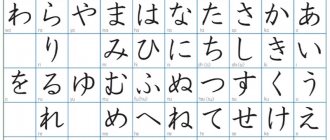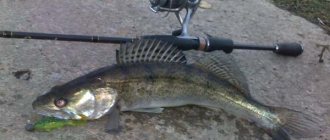Particles in Japanese. Japanese for beginners
Particle は (wa)
When the syllable は (ha) is used as a particle, it is pronounced "wa". It's just something to remember
subject は predicate です。
私は学生です。(Watashi wa gakusei desu.) - I am a student.
Particle の (no)
Genitive
1) noun1 +の+ noun2
The particle のindicates ownership, i.e. shows who the item belongs to.
noun1 answers the questions: Whose? Whose? Whose?
私のとけい(watashi no tokei) – My watch (whose watch? Mine)
かれの本(Kare no hon) – His book (whose book? His)
私のかのじょ(Watashi no kanojo) – My girlfriend (whose girl? Mine)
2) noun1 +の+ noun2
noun1 explains what noun2 is about
これ は くるま の 本 です。 (Kore wa kuruma no hon desu.) – This book is about cars. (noun1 shows what the book is about)
3) noun1+の+ noun2
noun1 – name of a country or company
noun2 – an object that belongs to a given company or country
にほんのくるま (Nihon no kuruma) – Japanese car
ソニーのテレビ (Sonii no terebi) – Sony TV
Particle に (ni) and へ (e)
direction of movement
These particles show the object/destination we are moving towards.
Noun (place) へ + verb of motion
Noun (place) に + verb of motion
The particle へ(e) or に(ni) must be preceded by a noun denoting place. In Russian, both particles are translated as “v”. A noun is asked the question “where?”
がっこう へ いきます (gakkou e ikimasu) - going to school (going where? To school)
に(ni) and へ (e) difference
に(ni) is used when the object is the final destination. Those. this place is a person’s goal, this is where he goes.
へ(e) shows that the object is moving in that direction , but this may not be its final destination
がっこう に いきます (gakkou ni ikimasu) - going to school (school is the final destination. He is not going anywhere further)
がっこう へ いきます (gakkou e ikimasu) - walking in the direction of the school (Perhaps the school is his goal, or maybe he will just pass by it.)
Particle を (o)
accusative
Noun を + verb
The particle を(o) indicates the object on which the action is performed. In Russian, the particle を(o) denotes the accusative case. (That is, the noun before the particle を(o) must answer the questions: “Who?” “What?”)
本をよみます(hon o yomimasu) - reading a book (reading what? A book)
あなた を ころす (anata o korosu) – I will kill you (I will kill who? You)
Particle も (mo) – “too”
The particle も(mo) in Russian is translated as: “too” or “also”
私もいきます(watashi mo ikimasu) – I’ll go too
かれも見ます(kare mo mimasu) – He is also watching
Particle で (de)
The particle で(de) has several meanings:
1) nounで+ action verb
Here the particle で(de) is placed after the noun denoting the place in which the action takes place
いえでたべます (ie de tabemasu) – I eat at home. (Home is the place where you perform an action)
へやでおどります (heya de odorimasu) – Dancing in the room (Room is the place where you dance)
2) nounで+ verb
はさみ で きります (hasami de kirimasu) - cutting with scissors (I cut with what? With scissors)
バスでいきます (basu de ikimasu) - I’ll go by bus (I’ll go by what? Bus)
Particle と (to)
noun と noun
The particle と shows that the action is performed together with someone. Translated into Russian as: “with” or “together with”
ともだちとあそびます (tomodachi to asobimasu) – playing with a friend
That's all for today! This is not the entire list of particles; there will be others during the learning process. Good luck in learning Japanese and see you soon!
Source
Particle i/s - 「と」
We already learned in the last chapter that we can use the particle 「と」 to list nouns, such as salt and pepper. We can use the same particle to describe an action that was done to someone/something.
Example
- 友達【とも・だち】 - friend
- 遊ぶ 【あそ・ぶ】 - play
- 話す【はな・す】 - to speak
- 親戚 【しん・せき】 - relative
- 会う【あ・う】 - to meet
- Play with a friend.
- リーさんと話す。Talk with Li-san.
- 親戚と会う。Meet a relative.
Particles in Japanese. Let's make your speech more lively!
You can easily make your speech more lively in Japanese by using particles at the end of what is said, giving the sentence a certain emotional connotation.
Particle ね(ne) For example, the Japanese often use the particle ね(ne) when they want to receive confirmation of their words, they want to make sure that what they said really takes place. The particle ね(ne) invites the interlocutor to express his opinion on what he heard: 桜がすっかり咲いていますが、奇麗ですね。(sakura ga sukkari kaiteimasu ga, kirei desu ne) – Sakura has fully blossomed , really, it’s beautiful! In addition, the particle ね(ne) makes speech softer: 一緒に行こうね(issho ni iko: ne) - Let’s go together. In contrast to the sentence without ね(ne): 一緒に行こう(issho ni iko:) – Let’s go together.
Particle よ(yo)
Another commonly used particle is よ(yo). It serves to emotionally enhance what is being said: 違うよ (chigau yo) - Not at all like that! もう遅いから帰りましょうよ(mo: osoi kara kaerimasho: yo) - It’s late, let’s go home already! Or it is used to strengthen a statement when it is assumed that the interlocutor does not know about the information being communicated: 今日は雨が降るそうですよ (kyo: wa ame ga furu so: desu yo) - I heard it will rain today! By the way, otaku (ardent fans of anime, manga, etc.) say お(o) instead of よ(yo) - they can be easily recognized by this feature.
Particle な(na)
The particle な(na), which is often found in male speech, firstly, expresses a slight emphasis on what is being said: 寒いな(samui na) - It’s cold, after all. Secondly, it is used when thinking: そうか、病気では今日来るはずはないな。(so: ka, byo:ki de kyo: kuru hazu wa nai na) – That’s it, because of illness he should not come today ... Especially together with the particle か(ka): 来週の日曜日は何日かな。(raishu: no nichiyo:bi wa nannichi ka na) – What date will it be next Sunday. Thirdly, the particle な(na) is used to roughly prohibit doing something: 読むな(yomu na) – Don’t read! するな(suru na) – Don’t do it! 来るな(kuru na) – Don’t come!
Particle わ(wa)
Piece of context - 「で」
A context particle is used to describe the context in which or through which the action of a verb occurs. For example, if you are eating in a restaurant, since restaurant is not the direct target of the verb "to eat", you would not use the particle 「に」. Instead, you'll use the particle 「で」 to show that the restaurant is the context in which food consumption occurs.
Example
- レストラン - restaurant
- 日本語【に・ほん・ご】 - Japanese
- 話す【はな・す】 - to speak
- はし - chopsticks
- Cinema
- 仕事【し・ごと】 - work
- 忙しい【いそが・しい】 (and adj.) - busy
- レストランで食べる。Available in the restaurant.
- 日本語で話す。Speak Japanese. (Speak using Japanese.)
- はしで食べる。Eat with chopsticks. (Eat with chopsticks.)
- 映画館で映画を見る。Watch a movie in the cinema.
- 仕事で忙しい。Busy with work.
Differences
"Va" and "ga"
"Ni" and "de"
“Ni” and “de” in the meaning of “location” are almost interchangeable.
"Ni" and "e"
“Ni” and “e” both mean movement towards some object, with “ni” meaning “in” and “e” meaning “to”:
"Ga" and "o"
In some cases, "ha" and "o" are used interchangeably, for example with the desired mood of the verb.
"Neither" and "that"
"I" and "that"
"I" is used to list part of a list, and "that" is used for limited lists.
Japanese grammar
The Japanese language is different from Russian in many ways, which causes difficulties for beginners. In particular, it is impossible to correlate the grammatical phenomena of a foreign language with the native one: they simply do not exist in the native one. The statement is also true vice versa: students of Japanese do not always understand why it does not have genders, persons, and so on, but Russian does. They ask themselves: is it possible without them? and they are afraid that due to too many differences they will not succeed. This article is intended to make it easier for all beginners to understand the basics of Japanese grammar .
As mentioned above, in the Japanese language one can observe some grammatical phenomena that do not exist in Russian. For example, this is a continuous aspect, an incentive voice, degrees of politeness, a desirable mood, and so on. However, the Russian language is characterized by something that cannot be found in Japanese: gender, person, perfective and imperfective aspect . Of course, some grammatical categories exist in both languages, but in each they have their own characteristics. Among such categories are tenses, voices, cases .
As in Russian, in Japanese parts of speech have declensions and conjugations . Nouns, pronouns and numerals are declined, predicative adjectives and connectives are conjugated. In addition, there are unchangeable parts of speech. These include adverbs and non-predicative adjectives.
Declension in the Japanese language occurs as follows: certain suffixes are added , reflecting different grammatical meanings. When conjugating, the sounds at the base of a word can change , then suffixes are added .
In Japanese, adjectives, verbs and connectives have a final and non-final form . The final form is the form that completes a sentence . She signals his end. The non-conclusive form is used to link simple sentences as part of a complex sentence . Accordingly, she stands in its middle. The final form reflects such grammatical categories as tense and modality (the degree of truthfulness of the statement), the non-final form does not convey them. It inherits the meaning contained in the final form of the predicate of the main clause.
It should also be remembered that in Japanese the subject does not agree with the predicate; the defined word does not require agreement with the definition.
Japanese sentences have a strict word order : the subject group (the subject and its definition), as a rule, comes at the beginning, the predicate at the end, the subordinate member of the sentence precedes the member of the sentence on which it depends.
に or で? Which particle to choose depending on the situation
So, let's begin
There is one simple rule for distinguishing between に and で:
に defines the place where something or someone *exists.” The action is performed in a certain order. The emphasis is on the place.で defines the position where some kind of action takes place (forgive the use of the word, but for the sake of clarity it is used), i.e. events, events, some kind of “movement”. These are the words that define the particle で. Sometimes you can even move around the same location (location). The emphasis is on action.
And now a little more detail:
construction で+location + action verb
店で買い物をする。 I shop at this stall (Emphasis on action. Shopping is the main action here)
I have breakfast in a cafe (it doesn’t really matter where, it’s important that I have breakfast)
It is very important to know, and this is said on many sites - 寝る (ねる) - sleep, a verb of not quite active action. Therefore, the Japanese sometimes use で, and sometimes - に in the second case, the passivity of the action is emphasized, and detachment from the situation, because the emphasis moves from action to place.
Sleeping in bed is often put with に: ベッドに寝る
どこでその事件のことをわかりましたか? - How did you find out about the incident? (here also the emphasis is on action, to learn, and not about the place, although the question is asked about the source).
2) When you identify a place where some activity is happening, often unpredictable or unusual
I have rallies starting in the afternoon tomorrow (active chatter)
次の会議はロンドンであります。 - The next meeting will be in London
(らいしゅうのかいよう) - Next week on Tuesday there will be a party to see me off, please come, take part)
Nowに
1) When you determine the direction, location to which a person is moving (destination point, destination, final destination):
I'm going to Kyoto tomorrow.
2) When you determine the place where something or someone exists. Designs
その近くにデパートがあります - There is a department store nearby
今、どこにいますか? - Where are you now? - いま、いけぶくろにいますー I’m currently in Ikebukuro
You can often see に with place of residence 住む(すむ) どこに住んでいますか?ー Where do you live? (we are interested in the location, not how active you live).
However, there is another verb “to live” 暮らす(くらす)it already, with the exception of a few cases, comes with で, because the verb has activity (to lead a life, not just live). The situation is similar with 生活する (せいかつする) – also to live, to lead a lifestyle.
3) This particle also determines the place where you install, lay, secure, repair, and so on. All action is performed in this place and on a specific object
図書館に本を返す – I’ll return the book to the library
I'll put the magazines on the shelf
(このかみになまえとじゅうしょをかいてください) - Please write your name and address on this piece of paper.
Let's put the toys in their place (i.e. in the drawer)
4) by the way, with the words はいる/はいっている(入る/入っている) に is also used
There is ice cream in the refrigerator
Direction case E (へ)
➀ Answers the question “where” and is used with verbs of motion:
図書館へ行く。Toshokan e iku.
Go to the library.
In this function it practically coincides with the accusative case NI (に). And although they are interchangeable in almost all cases, the NI (に) case is more likely to indicate the final destination of arrival, while when we put the E (へ) case, the emphasis is more on the path to that place. In other words, in the example above, we could go out in the direction of the library, but whether we get there or sit down on the way to eat ice cream and admire the birds is another question!










